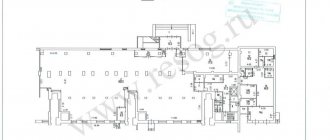The Russian Federation has adopted a law on “garage amnesty”. What kind of innovations await citizens, who will they affect, and how long will the amnesty last?
Russian President Vladimir Putin signed a law introducing a “garage amnesty”; it will last until September 1, 2026. The innovation allows you to register rights to land plots on which garages are located. The amnesty will allow citizens to obtain free ownership of state and municipal land plots on which garages are located. In this case, the plot must initially be provided to the person, for example, by an organization, or the right to it must arise on other grounds, for example, when establishing a garage cooperative
Objects covered by the law
The law applies to a greater extent to garages installed back in the Soviet years, which people received from the state, organizations or as members of various cooperatives. A mandatory requirement for objects that fall under the “amnesty” is that they must be built before the new Urban Planning Code comes into force, that is, before December 30, 2004).
The document states that the buildings should be one-story, without residential premises. They can be part of garage-building cooperatives or be separate capital buildings. The land on which the garage is located must be administered by the state.
Lawmakers assume that the document will enable more than 3.5 million citizens to register land plots where garages are located and obtain the right to use them. In modern realities, a huge number of garages are not properly decorated; people use them “with bird rights.” The new law will allow citizens to become full owners of such objects in a simplified manner, including conducting transactions with this property in the future.
Excluded from the law, that is, they do not fall within its scope:
- "shells";
- self-construction;
- underground garages in multi-storey and office complexes.
For reference: A shell garage is a collapsible metal car garage. It got its name due to the fact that in appearance it looks like a shell. This is a kind of tent, both externally and legally.
An exception for non-capital objects will be made for people with disabilities: they will be able to legalize self-built garages
How to build a second floor
The legislation does not provide for obtaining any permits for the construction of superstructures over garages, therefore, the implementation of a set of measures associated with the construction of residential buildings is not required.
However, it is clear that the second floor in the garage cannot be a vehicle storage room or an auxiliary building, since an existing building will be built on.
The rules do not stipulate the number of storeys of garage buildings. To avoid having to prove the legality of the construction of the attic in the future, if the owner of the built-on garage is accused of unauthorized construction, it is necessary to obtain permission to reconstruct the building.
Definition of unauthorized construction
We turn to Article 222 of the Civil Code of the Russian Federation with comments for 2017-2018.
- unauthorized construction includes construction on a plot of land for which there is no permit;
- or the development was carried out in violation of urban planning rules.
If the attic above the garage is classified as unauthorized construction, the building cannot be sold or inherited. Therefore, it will be necessary to prove in court that the construction of the second floor was carried out to create additional storage space for garage property.
By definition, the second floor in a garage cannot become an unauthorized building. It is erected over a non-residential building, and not on a plot of land.
Construction permit
However, a permit is required to carry out repair work so that the constructed facility is not classified as unauthorized construction. Indeed, in this case, the city authorities may demand the demolition of the building or force it to be returned to its original appearance. And the person who violated the rules, according to Art. 222 of the Civil Code of the Russian Federation, a fine will be issued.
Preparation stages:
- Obtaining an expert assessment of the strength of the garage structure. To do this, you need to contact organizations that have the right to conduct such a survey. After the specialist determines whether the poured garage foundation will withstand the additional superstructure, recommendations will be given on what needs to be done so that the dilapidated building can withstand the increased load. The older the garage, the more expensive it will be to renovate.
- Obtaining written permission for the attic, issued by the chairman of the GSK.
- Apply for permission from the architecture department to build an additional floor above the garage.
- Receive a construction project with an expert assessment.
- Start construction.
- To put the facility into operation, to do this, contact the BTI and obtain a new technical passport for the building.
What you need to decorate a garage
To register a garage as their property, citizens will need to contact their local government with an application to provide a plot for an existing garage.
In the future, this opportunity will also become available through the “My Documents” MFC. The amnesty implies a simplified procedure for registering ownership of garages and the land under them. Any document confirming the fact of ownership will allow you to register ownership of an old garage.
Specific lists will be established at the regional level, but it is assumed that proof of ownership can be:
- receipts for payment of utilities related to the garage;
- agreements on connecting the garage to utility networks;
- documents confirming the completion of state technical registration or inventory (before January 1, 2013);
- documents on the distribution of land plots during the creation of the State Joint Stock Company;
- checks for payment of share contributions and so on.
“Garage amnesty” will be carried out by analogy with the “dacha amnesty”. In addition, most of the responsibilities for paperwork will be assigned to representatives of the municipality. “This will reduce the time costs of garage owners and reduce their financial costs during registration actions.
Finish line
The act of acceptance of completed work is not everything. After receiving this document, a person must contact the BTI with it. In addition to the act, you will need a certificate of ownership, a project plan and a passport. A BTI employee will accept the documents. And in a few days the owner will need to come for a new property passport, in which all the technical characteristics of the property will be changed.
The final stage is an application to Rosreestr. There the person will be given a new certificate of ownership. To issue it, you must present:
- Certificate of ownership.
- A document confirming ownership (exchange, gift, purchase and sale agreement).
- Acceptance certificate.
- Cadastral passport.
- Plan-project.
- Receipt for payment of state duty.
- Passport.
The certificate will be issued within three months. After it is received, a person can apply for registration, sell, or rent out - many do not mind living in a garage, as in a rented room, since such options are cheaper than apartments.
Will I need to pay taxes?
After registering the land and garage as property, the owners will have to pay land tax and personal property tax.
It will be possible to calculate the amount of tax only when the land plot and garage are entered into the register and their cadastral value is calculated. After this, you can use the tax calculator on the official website of the Federal Tax Service of Russia. To find out the tax amount, you will need to know the cadastral number of the property.
Is it possible to convert a garage into a commercial property?
The term “commercial real estate” refers to a large number of objects, including pharmacy kiosks, production workshops, hairdressers, shops and other types of buildings. The possibility of transferring a garage to this category is possible, but only under certain conditions.
The following factors influence the decision:
- technical characteristics of the garage;
- type of organized activity;
- site location;
- intended purpose of the land.
The type of business activity for which it is planned to change the status of the garage building plays an important role. If we are talking about organizing a pharmacy or business center, then using an ordinary metal box for such purposes will most likely not work.
Who will not be able to benefit from the amnesty?
Not everyone will receive land ownership. Registration of land ownership may be refused if:
- the land belongs to a nature protection zone;
- if it turns out that the land has an owner, and this is not the state;
- if the building does not meet safety rules (located under power lines or too close to a gas station) or located on land allocated for road construction.
Such situations will be considered in court. But, according to experts, they will be the exception to the rule.
Conversion into living space
Not all people are interested in building an additional block. They are specifically interested in whether it is possible to live in a garage. Well, theoretically, yes. But you will have to convert it into residential premises, and then register it as real estate suitable for registration and permanent residence. This is what applies to the basic requirements from the Decree of the Russian Federation of January 28, 2006. No. 47, which such a garage must comply with:
- Efficient load-bearing structures.
- Fire safety.
- Compliance with SanPiN.
- Protecting space from leaks of household water.
- Engineering systems carried out in accordance with all safety requirements.
- The height of the ceilings of the rooms and corridors is 2.5 and 2.1 meters, respectively.
- The presence of windows for natural light.
All requirements are logical. But there is one more nuance that is worth knowing about. Many people ask the question: “Is it possible to live in an underground garage?” So, it’s impossible. Permanent residence is not permitted in basements or basements. Accordingly, owners of underground buildings will not be able to register in such real estate.
Video description
In the video, the garage owner talks about his plans to add a brick second floor, which can be used as an office and recreation area:
Option No. 2
This design is much cheaper than the previous one. Because it is a garage with a mansard roof. That is, it turns out that a roof with an attic is built over the garage building, which is then rebuilt into a living space. There are no restrictions on what type of roof will be redone. That is, whether it is single-, double-sloped or some other. The photo below shows an option with a pitched roof structure. Although this is more often the exception than the rule, because traditionally attics are organized under gable structures.
Imagine a garage with a finished pitched roof. If there is enough space under it, then there are no barriers to organizing housing under the roof. The roof structure simply needs to be insulated using standard technologies. Here is the sequence of construction operations:
- a vapor barrier film is laid on the inside of the rafters;
- Between the rafters, insulation is then laid, for example, mineral wool slabs;
- the latter are covered with a waterproofing membrane;
- and at the end they finish with slab or panel materials: plywood, chipboard, OSB, plasterboard, etc.
A garage amnesty will be launched in Russia in September. What is important to know
Which garages will be affected by the amnesty?
The amnesty applies to garages built before December 30, 2004. On this date, the new Town Planning Code came into force. The code came into effect requiring that ownership of real estate be registered immediately after it is built. A large number of garages were built before these changes were adopted, and the ownership rights to them were often not formalized at all, although the garages were built legally, explains Pavel Ickert, managing partner of the law firm.
There is no exact data on how many garages may be included in the amnesty. But the explanatory note to the bill provides data from Rosreestr, according to which more than 5.6 million garage objects (buildings, structures, premises) have been registered with the state cadastral register, of which rights have been registered for only 3.5 million objects.
Read on RBC Pro
Hiring with a demotion: is it worth hiring a former manager for a line position? Founder of VkusVill: if the employee is not mistaken, he should be fired RBC Pro: run, be patient, look for profit. How to work with a toxic manager Prices for new Moscow buildings are almost at their peak. What should investors do?
At the same time, the number of existing unofficially, that is, not registered in the established order, garages is much larger, as indicated in the explanatory note.
Now the actual owner cannot register ownership of such a garage, because formally it is not a newly built structure, but he cannot buy it either, because the land under the garage was transferred “on unknown conditions, unknown when and unknown to whom,” says Ickert. “As a result, the actual owner of the garage uses it on a bird’s license, risking losing it at any moment, and local budgets do not receive any income from this, although they could, for example, include the garage and the land under it when calculating the property tax of individuals,” - adds the lawyer.
During the amnesty, if the garage was built before December 30, 2004, the person who uses it or his heirs will be able to privatize the land under it free of charge.
But there are conditions:
- if the garage is a non-permanent structure (that is, it does not have a foundation going into the ground and can be moved to another site without losses in the structure), then the site can be privatized only if it was formed from a site previously provided with the right of perpetual use to a garage cooperative , in which this person was a member, and the cooperative, in turn, distributed the garage to this person;
- a plot under a permanent garage can either be provided to a person by a garage cooperative, or allocated by any organization (for example, where he worked) or the state. Capital garages can be either separate buildings or be blocked by common walls, standing in one row, have a common roof, foundation and communications.
Which garages will not be included in the amnesty?
The land under the garage, like the garage itself, cannot be privatized if the garage is recognized as an unauthorized building subject to demolition.
The following are also not eligible for amnesty:
- garages, which are auxiliary facilities in relation to private residential buildings, industrial, industrial or commercial facilities. Including if garages are used for business activities - for repair, maintenance and car washing services;
- garages designed to store machinery and equipment necessary to support the activities of government agencies and transport organizations;
- garages located in apartment buildings and commercial buildings, as well as underground garages.
Also, the authorities have repeatedly stated that shell garages will not be included in the amnesty: they are classified as non-permanent buildings, but are not located on the territory of garage cooperatives.
Two-thirds of existing unregistered garages will be covered by the garage amnesty, estimates Sergei Kanaev, a member of the coordination council of the Federation of Car Owners of Russia. “This is a colossal figure,” the expert admits. “But with the rest, something will need to be decided over time. Even if, for example, business activities are carried out there, they need to be legalized. But now is the initial stage, the main thing is to launch the amnesty, and these nuances can be resolved in the future.”
How to privatize a garage and the land underneath it
The garage user must write an application for the provision of a plot of land. In such a statement it is necessary to indicate that the garage was built before December 30, 2004. The following must also be attached to the application:
- a document according to which the applicant has the right to use the site;
- a diagram of the location of the site on the cadastral plan of the territory (if the site is to be formed and there is no project for land surveying);
- technical plan of the garage.
If the applicant does not have a document confirming the allocation of a plot of land for his use, then he can attach at least one of the following documents:
- an agreement on connecting the garage to utility networks concluded before December 2004, an agreement on the provision of utilities in connection with the use of the garage, documents confirming payment of utilities;
- a document confirming the state technical registration or technical inventory of the garage before January 1, 2013. In this document, the applicant must be indicated as the owner of the garage or the customer of the work. The document must also indicate the date of construction of the garage - no later than December 30, 2004.
For plots included in garage cooperatives, you must also attach the following documents:
- a document confirming the provision of land to a garage cooperative or confirming the acquisition by the cooperative of the right to use the site;
- a decision of the general meeting of members of the cooperative on the distribution of a garage and a plot of land to a citizen or a document confirming the payment by such a citizen of a share contribution to the cooperative;
- extract from the Unified State Register of Legal Entities about the garage cooperative. If the garage cooperative has ceased to exist, the garage user still has the right to the land; in this case, the application must indicate that the cooperative has been liquidated.
After the application has been approved, the ownership (or lease, if the site cannot be privatized) of the land is registered simultaneously with the state cadastral registration of the garage and the registration of ownership rights to it. Once the transfer of ownership of the site to the garage user is approved, the authorities must submit the documents to Rosreestr within five working days. If they have not submitted such an application during this time, then the garage user himself can apply.
In total, no more than 20 working days should pass from the moment the applicant sends the technical plan of the garage to the registration of its ownership, subject to approval of the application.
Experience of land amnesties in Russia
On September 1, 2006, a dacha amnesty began to operate, under which it is possible to register rights to land, dacha and garden houses, garages and outbuildings in a simplified manner. This does not require a permit for construction and commissioning of the facility.
Since the beginning of the dacha amnesty, according to Rosreestr, ownership rights to more than 13.5 million real estate properties have been registered under a simplified procedure. Last year, the State Duma extended the dacha amnesty until March 1, 2026.
In August 2021, a forest amnesty was launched. It is needed to correct errors in double counting of forest areas. Due to the fact that previously there were no electronic records of land, the same territories may belong to both forest lands and agricultural lands or populated areas.
By January 1, 2021, under the forest amnesty, duplicate information on 43 thousand forest plots was excluded from the real estate register, and border crossings of 5.5 thousand forest plots were eliminated. In total, since the start of the forest amnesty, the area of forest areas has decreased by 158 million hectares, including 1.1 thousand hectares included within the boundaries of settlements.
Rosreestr proposed to supplement the “dacha amnesty” Society
Special cases of regulation of the new law
For the second reading, the bill “On Garage Amnesty” specifically stipulated the rights of people with disabilities to a parking space near their home. Disabled people will receive an extraordinary right to receive plots from state and municipal property for the construction of permanent or non-permanent garages near their place of residence or for arranging a parking lot near the house without providing a plot.
Before allocating areas for parking lots and garages, local authorities must approve in advance the layout of such facilities. Disabled people will be able to receive plots for the construction of garages or for parking free of charge, others - for a fee, the amount of which is not specified in the bill.
Also, people affected by radiation due to the accident at the Chernobyl nuclear power plant will receive the right to receive land plots for the construction of garages for their own needs.
Options for adding space above the garage
Converting a garage into a living space most often involves building a second floor. There are many options here on how to do this correctly. Let's look at some of them.
Option #1
Typically a garage is a block or brick structure with a strong foundation. There are no problems here; you can simply build a second floor by dismantling the roof structure, leaving the ceiling and raising the walls from the same material as the garage itself. And build the roof of a new house above the second floor.
The easiest way is if the garage is covered with a flat roof. You won't even need to dismantle it. Typically, the roof is either reinforced concrete floor slabs, or a monolithically poured slab with a reinforcing frame inside.
The walls are raised and the upper floor is formed. This can be the same slab or a structure built on load-bearing beams. The second option is easier in terms of load on the foundation. It is usually considered if the garage foundation structure is not strong enough to support a large amount of reinforced concrete.
The ceiling between the first and second floors must be insulated with a parallel construction of the floor of the living space. Usually these are logs that are attached to a concrete plane. A heat-insulating material, for example, expanded clay or mineral wool slabs, is placed between them. After that, a waterproofing membrane is mounted on top, and a floor base is formed on top (there are a lot of options).
Be sure to insulate the roof and ceiling between the second floor and the attic. If the garage with living space is covered with a flat roof, then thermal insulation is laid on top of the roof structure.










